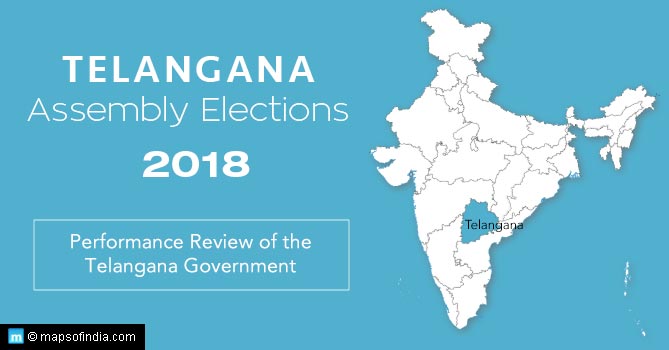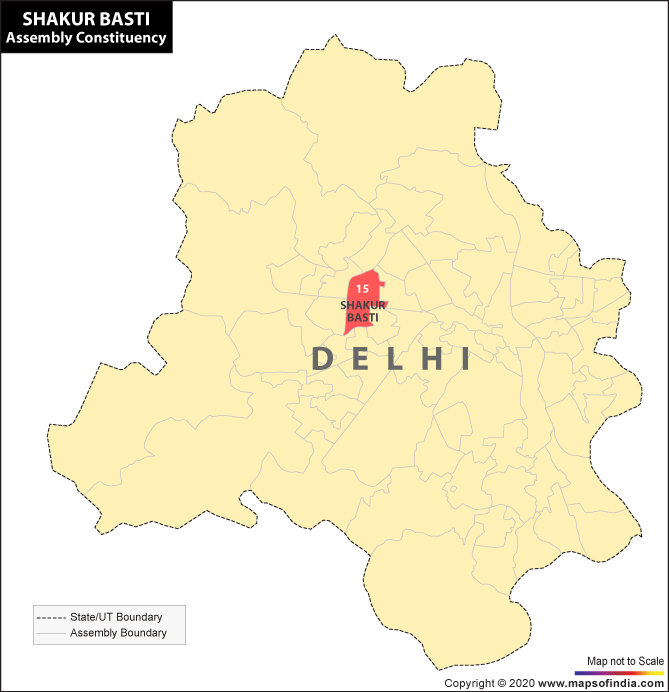
Telangana Assembly Elections 2018- Government Review
Telangana assembly elections will be held on 7th December 2018 to elect 119 legislators to the State Legislative Assembly. Out of a total 119 constituencies, 18 are reserved for SC candidates and 9 for ST candidates.
The strongly entrenched K. Chandrashekar Rao-led Telangana Rashtra Samithi (TRS) presently holds 90 of the total 119 seats and is confident of retaining power for the second term. So, how has the party performed thus far, and what are the chances of TRS winning a second term? Let’s review the performance on the following parameters and see what are the main issues the incumbent faces.
Political:
Current Scenario
- Total Assembly Seats: 119
- Current Seat break-up: TRS 90 ; INC 16 ; AIMIM 7 ; BJP 5 ; Tammimeni Veerabhadram 1
Campaigning by all parties for the Telangana Assembly Elections of 2018 is in full swing. Supporting TRS is the All India Majlis-e-Ittehadul Muslimeen (AIMIM) party. And they face strong opposition from parties that have come together in an alliance – Maha Kutami, comprising the Indian National Congress (INC), Telugu Desam Party (TDP), Communist Party of India (CPI), and Telangana Jana Samithi (TJS), with the sole purpose of dislodging TRS. That won’t be easy.
Maha Kutami has no leader that comes close in stature to KCR and remains without any clear agenda to challenge the TRS development agenda. Both INC and TDP, which have had a strong base in the region before Telangana’s formation, are now weaker than in 2014.
Main challenges:
For TRS, it is restricting an aggressive BJP in the state. For the opposition, putting up a credible CM face to challenge KCR remains a challenge for Maha Kutami.
Economic
Current Scenario
- GSDP (2011-12): $74.97 billion ; GSDP (2017-18): $113.68 billion
- GSDP Growth Rate (2011-12) to (2017-18): 12.60%
- GSDP share of Industry: 20%
- Gross State Value Added (GSVA) of Agriculture in 2015-16: 14.7%
Telangana was lucky to inherit Hyderabad as its capital; an established IT city which gave TRS launching board to catalyze overall development in the state.
The state government has focused on three core areas for industrial development, based on its existing strength; pharmaceutical manufacturing, IT and ITeS, and defence manufacturing.
Telangana share of pharmaceutical exports is around 20%, bringing in around $1.49 billion (Rs 10,000 crore approx.) in the last four years. The state is planning to build the Hyderabad Pharma City spread over 19,000 acres and is expected to attract investment of around $993.02 million (Rs 6,800 crore approx.).
Telangana is setting up the National Investment, and Manufacturing Zone (NIMZ) spread over 12, 635 acres, of which 3,000 acres have been procured for launching Phase 1. It is expected to emerge as a major manufacturing hub.
The state is actively promoting defence production under the Make in India initiative. The state has already attracted major international and domestic companies for establishing manufacturing facilities here.
The IT and ITeS sector services export earned $14.50 billion (Rs 92,500 crores) in 2017-18. The state has plans of developing the Information Technology Investment Region (ITIR) in the outskirts of Hyderabad and is expected to directly employ around 15 lakh people and create indirect jobs for another 50 lakh over the next five years.
KCR is ambitious and confident of the number of jobs created in the last four and a half years, and the prospect of creating more jobs over the next five years is expected to pay TRS good dividends in the forthcoming elections.
Main challenges:
Loan waivers to farmers and other populist schemes have stressed the state’s budget. Furthermore, Telangana is facing stiff competition from A.P. for attracting domestic investment and FDI.
Infrastructure
The government is rapidly developing core infrastructure in the state including power generation, roads, housing, medical facilities, and educational institutions. Four thermal power projects with a combined generation capacity of 7,480 MW are under construction. Also, two hydropower projects are expected to boost power generation capacity in the state.
The state has launched a major fiber-optic network using a water distribution pipeline network. It is expected to bring high-speed internet to people’s homes.
Mission Bhagiratha is an ambitious project aimed at providing drinking water to all households and is 95% complete. The scheme has been well-received and will help TRS in the forthcoming elections.
After focusing on areas like housing, irrigation, and welfare in rural areas in the previous four and a half years, TRS has promised to focus on urban infrastructure development in the next five years where 44 percent of the population lives.
Main challenges:
The state has not been able to get the expected funds needed for infrastructure development from the center. With fast emerging A.P. competing for domestic and foreign investment, TRS will have to be more aggressive in raising domestic and international funding.
Social
The Amma Odi scheme provides free transport to medical facilities for pregnant women, before and after delivery.
In 2017, the KCR Kit scheme was launched. Under this scheme, pregnant women will receive a Rs 12,000 financial aid along with the KCR Kit to aid the newborn and the mother. Both Amma Odi and KCR Kit are very popular with people, and TRS expects the voter to remember during polls on the 7th of December.
Main challenges:
Caste divisions, farmer distress, are sensitive factors that TRS will have to overcome.
Other articles on Assembly Elections 2018:




